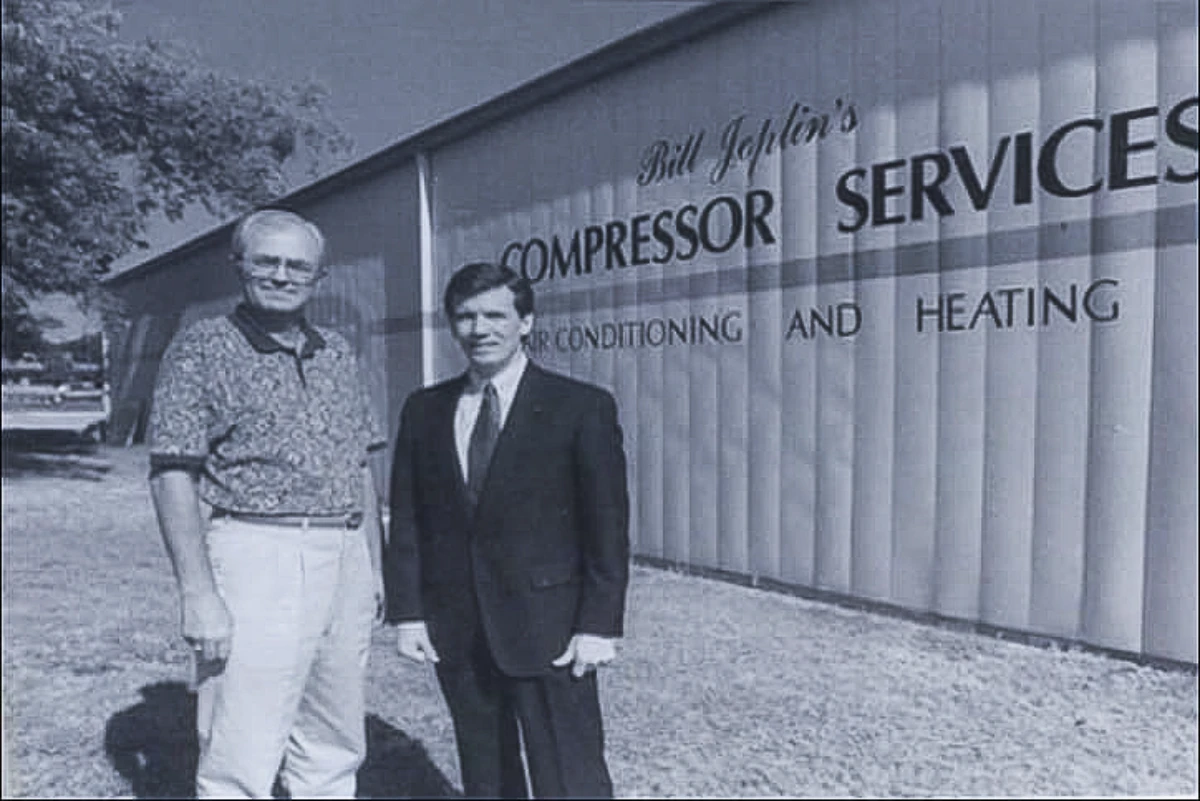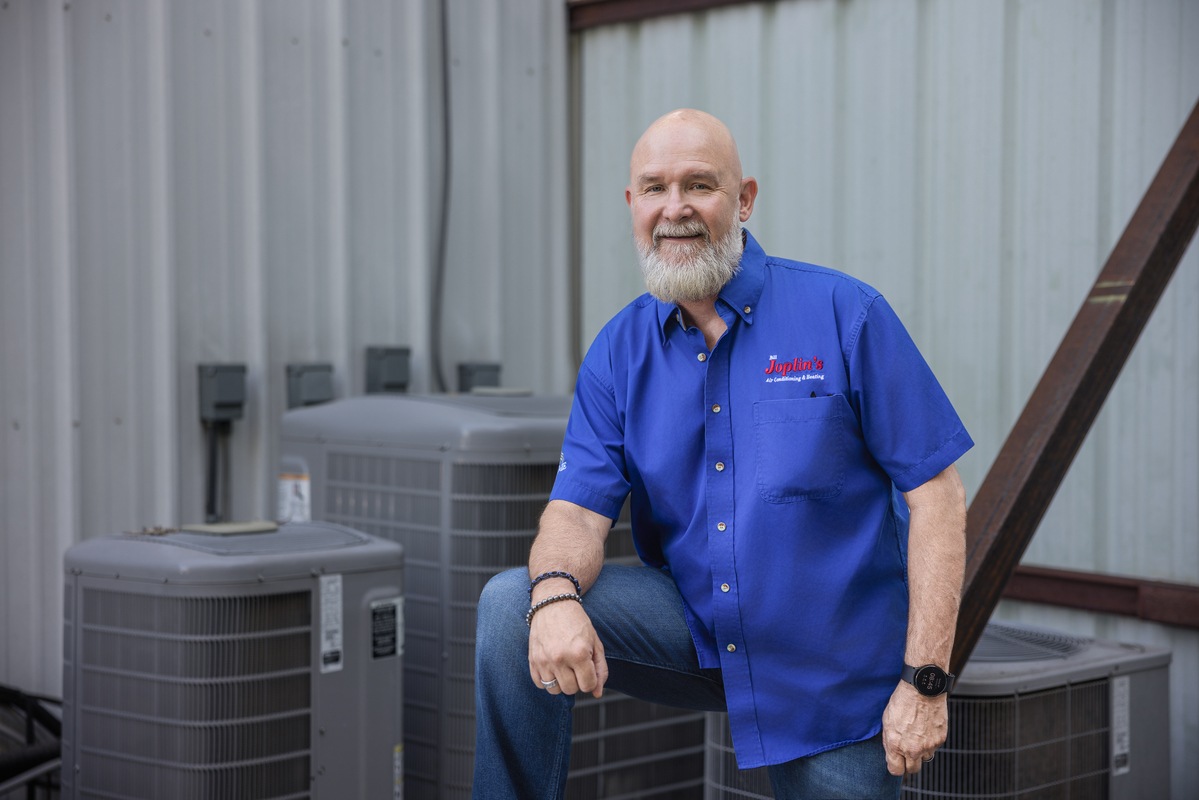Commercial HVAC Replacement in Plano, TX
When your commercial HVAC system reaches the end of its operational lifespan, making strategic replacement decisions becomes critical for maintaining business continuity and controlling overhead costs. At Bill Joplin’s Air Conditioning & Heating, we specialize in comprehensive commercial HVAC replacement services throughout Plano and surrounding areas including McKinney, Allen, Fairview, Prosper, and Melissa. Since our founding in 1978, we’ve helped countless businesses navigate the complex process of upgrading their climate control systems while minimizing disruption to daily operations.
Commercial HVAC replacement represents a significant capital investment that directly impacts your facility’s energy efficiency, indoor air quality, and occupant comfort. Unlike residential systems that typically serve single-family homes, commercial HVAC equipment must handle larger spaces, varied occupancy levels, and diverse thermal loads across different zones. These systems often incorporate sophisticated controls, multiple air handling units, and complex ductwork configurations that require specialized expertise during the replacement process.
Signs Your Commercial System Needs Replacement
Determining the optimal timing for commercial HVAC replacement requires careful evaluation of multiple performance indicators and operational factors. Most commercial systems demonstrate clear warning signs before complete failure occurs, allowing property managers and business owners to plan proactively for replacement rather than facing emergency situations. Age serves as a primary indicator, with most commercial rooftop units and split systems experiencing significant efficiency decline after fifteen to twenty years of continuous operation. However, chronological age alone shouldn’t dictate replacement decisions without considering maintenance history, operational demands, and current performance metrics.
Escalating repair costs often signal that replacement makes more financial sense than continued maintenance. When annual repair expenses exceed fifty percent of replacement cost, or when major components like compressors, heat exchangers, or control boards require replacement, investing in new equipment typically provides better long-term value. Additionally, frequent breakdowns that disrupt business operations create hidden costs through lost productivity, customer dissatisfaction, and emergency repair premiums that quickly offset the initial savings of postponing replacement.
Energy consumption patterns provide another crucial metric for replacement timing. Commercial HVAC systems manufactured before 2010 typically operate at significantly lower efficiency ratings than current models, with older units consuming thirty to forty percent more energy than modern high-efficiency alternatives. Monthly utility bills that consistently exceed industry benchmarks for similar facilities indicate that outdated equipment drains operational budgets through excessive energy consumption.
Commercial HVAC System Types and Technologies
The commercial HVAC landscape encompasses diverse system configurations designed to meet specific building requirements and operational demands. Rooftop packaged units remain the predominant choice for retail spaces, office buildings, and light industrial facilities throughout Plano due to their space-saving design and simplified installation requirements. These self-contained systems integrate heating, cooling, and ventilation components within a single cabinet, streamlining maintenance access and reducing indoor mechanical room requirements.
Split systems offer flexibility for buildings with architectural constraints or specific zoning requirements. By separating outdoor condensing units from indoor air handlers, split configurations allow customized equipment placement while minimizing noise transmission to occupied spaces. Variable refrigerant flow systems represent an advanced split system variant that enables simultaneous heating and cooling across different building zones, optimizing comfort control for facilities with diverse thermal requirements.
Built-up systems provide maximum customization for large commercial facilities requiring precise environmental control. These engineered solutions combine chillers, boilers, air handlers, and cooling towers into integrated networks capable of serving expansive floor plans and complex load profiles. While initial investment costs exceed packaged alternatives, built-up systems deliver superior efficiency and longevity when properly maintained, making them ideal for hospitals, data centers, and manufacturing facilities where environmental control remains mission-critical.
The Replacement Process and Planning
Successfully executing commercial HVAC replacement requires meticulous planning that addresses technical requirements, budgetary constraints, and operational continuity. Our replacement process begins with comprehensive load calculations that account for building envelope characteristics, occupancy patterns, equipment heat gains, and ventilation requirements mandated by current building codes. These calculations ensure proper system sizing that avoids the efficiency penalties associated with oversized or undersized equipment.
Equipment selection involves evaluating multiple factors beyond basic capacity requirements. Energy efficiency ratings, including SEER for cooling and AFUE for heating, directly impact long-term operating costs. Integration capabilities with existing building automation systems determine whether new equipment can leverage current control infrastructure or requires additional investment in updated controls. Warranty provisions, parts availability, and manufacturer support networks influence long-term maintenance costs and system reliability.
- Initial Assessment: Comprehensive evaluation of existing system performance, building requirements, and replacement objectives
- Load Calculation: Detailed analysis using Manual N procedures to determine precise heating and cooling requirements
- Equipment Selection: Comparison of manufacturers, models, and configurations to identify optimal solutions
- Installation Planning: Development of phased replacement strategies that minimize business disruption
- Commissioning: Systematic testing and adjustment to verify proper operation and peak efficiency
Energy Efficiency and Cost Considerations
Modern commercial HVAC systems incorporate advanced technologies that dramatically reduce energy consumption compared to equipment manufactured even ten years ago. Variable-speed compressors adjust capacity to match real-time cooling demands, eliminating the energy waste associated with traditional on-off cycling. Economizer controls leverage favorable outdoor conditions to provide free cooling when ambient temperatures permit, reducing mechanical cooling requirements during mild weather conditions.
Heat recovery systems capture waste thermal energy from cooling processes and redirect it for space heating or water heating applications, improving overall system efficiency. Advanced filtration technologies, including MERV-13 filters and ultraviolet germicidal irradiation, enhance indoor air quality while maintaining efficient airflow characteristics. Smart thermostats and building automation systems optimize scheduling, setpoints, and equipment staging based on occupancy patterns and weather forecasts, ensuring comfort while minimizing energy waste.
Financial incentives available through utility companies and government programs help offset replacement costs while accelerating return on investment. Many utility providers offer rebates for high-efficiency equipment that exceeds baseline efficiency standards, with incentives ranging from hundreds to thousands of dollars per ton of cooling capacity. Federal tax credits and accelerated depreciation schedules provide additional financial benefits that improve project economics.
Ensuring Long-Term Performance
Maximizing the lifespan and efficiency of new commercial HVAC equipment requires commitment to proper maintenance protocols from day one. Establishing comprehensive maintenance agreements ensures regular filter changes, coil cleaning, refrigerant level checks, and component inspections that prevent minor issues from escalating into major failures. Documentation of all maintenance activities creates valuable historical records that support warranty claims and inform future replacement decisions.
Training facility personnel on proper system operation prevents inadvertent damage caused by incorrect thermostat programming or inappropriate manual overrides. Understanding basic troubleshooting procedures enables rapid response to minor issues before they impact business operations. Regular communication between facility managers and HVAC service providers ensures that emerging problems receive prompt attention while maintaining optimal system performance throughout the equipment lifecycle.
The commercial HVAC replacement services we provide at Bill Joplin’s Air Conditioning & Heating extend beyond simple equipment installation to encompass comprehensive solutions that address your facility’s unique requirements. Our experience serving Plano businesses since 1978 provides invaluable insight into local climate challenges, building code requirements, and industry best practices that ensure successful project outcomes. Whether replacing aging rooftop units, upgrading to high-efficiency systems, or implementing sophisticated building automation controls, we deliver professional installation services that maximize equipment performance while minimizing operational disruption to your business activities.


